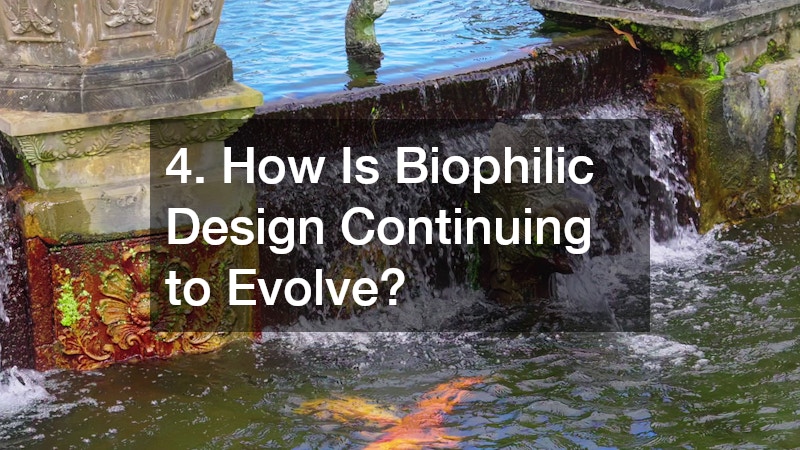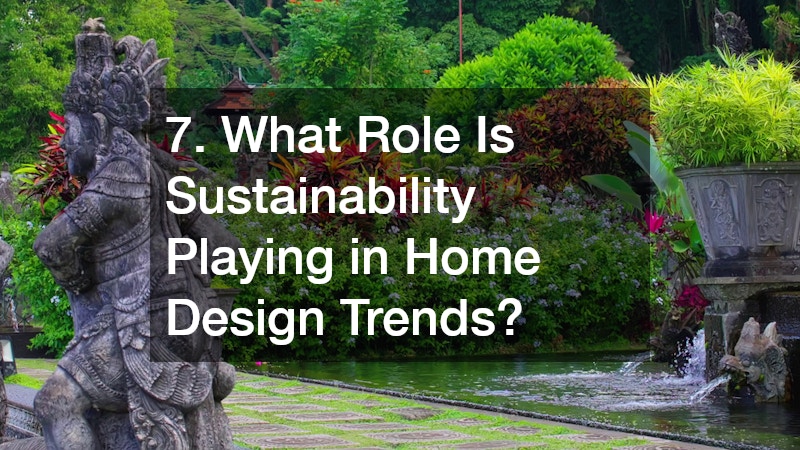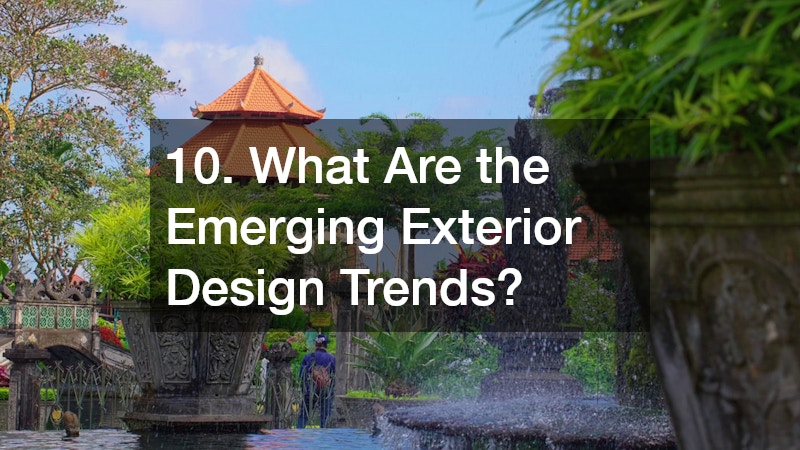The year 2025 is poised to redefine the way homeowners think about design, functionality, and sustainability. With lifestyles becoming more hybrid—balancing work, leisure, and comfort under one roof—home upgrades are reflecting this shift toward versatility and sophistication. From the hues adorning living rooms to the innovations transforming kitchens, bathrooms, and exteriors, the design world is embracing a fusion of style and practicality. One of the biggest movements driving these changes is the demand for personal expression. Homeowners no longer settle for cookie-cutter spaces. They want homes that tell a story—spaces that blend comfort, modern convenience, and eco-conscious choices. Interior design trends are increasingly about creating environments that improve mental well-being, enhance functionality, and seamlessly integrate technology without sacrificing warmth.
Energy efficiency and sustainability are also influencing nearly every design decision. Whether it’s through solar integration, recycled materials, or water-saving fixtures, eco-friendly choices are becoming standard, not optional. This mindset extends to the exteriors as well, where awnings for windows, metal roofs, and synthetic lawns are growing in popularity for their durability and efficiency. Technology continues to play a pivotal role in shaping how we experience our homes. Smart lighting, climate control, and connected appliances have gone from luxury upgrades to everyday essentials. The modern kitchen remodel now includes AI-powered cooking systems and voice-activated faucets, merging design with convenience. Similarly, advances in electric panel upgrades ensure that homes are equipped to handle the increasing power demand brought on by smart appliances, electric vehicles, and renewable energy systems.
Another defining feature of 2025 design is adaptability. With homeowners spending more time at home, spaces are being reimagined for multiple purposes—offices that convert into guest rooms, dining tables doubling as workstations, and living rooms seamlessly transitioning into entertainment zones. The result is a home that feels alive, constantly evolving to meet the occupant’s needs. As the design landscape continues to evolve, one thing remains clear: the home of 2025 is built around harmony—between humans and nature, technology and craftsmanship, aesthetics and functionality. The following trends reveal how this balance is being achieved across different aspects of home design.
1. What Are the Upcoming Color Trends in Home Design for 2025?

Color palettes in 2025 are moving toward grounded, nature-inspired tones that evoke a sense of calm and connection. Warm neutrals, such as clay, terracotta, and mushroom beige, are making a comeback, while deep greens and ocean blues bring an organic richness to interiors. These hues pair beautifully with awnings for windows, which not only enhance curb appeal but also provide functional shading that complements the home’s color scheme. Expect to see combinations that embrace serenity—soft matte finishes, tactile fabrics, and subtle contrast rather than bold, high-gloss statements.
Designers are predicting an even greater shift toward personalization through layered tones and textures. Rather than a single dominant color, 2025 homes are favoring multi-dimensional palettes that reflect individuality and comfort. For instance, pairing earthy browns with soft sage or dusty rose can create balance and depth, while cool gray-greens lend a modern edge. The goal is to build spaces that feel lived-in and soothing rather than overly polished.
Additionally, natural light plays a pivotal role in how these colors come to life. Homes with expansive windows or strategically placed awnings for windows can manipulate sunlight to highlight color variations throughout the day, adding subtle movement to otherwise static spaces. This trend celebrates authenticity—embracing imperfection and natural variation to create truly timeless interiors.
2. How Is Smart Technology Influencing Home Upgrades?
Smart technology is at the core of the 2025 home upgrade movement. Homeowners want convenience without clutter and automation that feels intuitive. The modern kitchen remodel now integrates smart appliances, AI-assisted ovens, and voice-controlled lighting systems. Technology extends to comfort, too—programmable thermostats, smart security systems, and app-connected fixtures make everyday life smoother. This trend also pushes for improved energy management, with automated lighting and temperature controls that lower utility bills and enhance sustainability.
In 2025, the concept of a “connected home” is expanding beyond convenience into personalization. Homeowners can now use data-driven insights to optimize everything from cooking times to indoor air quality. Smart refrigerators track grocery items and suggest recipes, while integrated kitchen hubs display real-time nutritional data and expiration reminders. In living spaces, smart speakers, blinds, and climate systems sync seamlessly, learning user preferences and adjusting automatically throughout the day. These innovations make life easier, healthier, and more efficient without requiring constant manual input.
The evolution of smart homes also emphasizes aesthetics. Gone are the bulky control panels of the past—modern systems are sleek, minimalistic, and blend naturally into décor. Hidden sensors and discrete interfaces maintain a clean, uncluttered environment while offering advanced control. Homeowners increasingly choose technology that complements their interior design rather than competes with it.
Energy efficiency continues to be a major focus. Upgraded electric panels are essential to handle the increased load of high-performance appliances and renewable power sources such as solar panels and electric vehicle chargers. Smart meters track real-time consumption, allowing homeowners to make informed choices about their usage. Combined with energy-efficient lighting and insulation systems, this creates a truly intelligent home ecosystem that’s both luxurious and environmentally conscious. Ultimately, smart technology is not just transforming homes—it’s redefining how people live, interact, and connect with their surroundings.
3. What Are the Popular Materials Being Used in 2025?
Designers are prioritizing durability and timeless appeal, and that’s where metal finishes shine. Metal roofers are experiencing increased demand as homeowners opt for long-lasting, weather-resistant roofing solutions that offer modern aesthetics and energy efficiency. Indoors, expect a mix of natural and engineered materials—think reclaimed wood, terrazzo, polished concrete, and brushed brass accents. These materials embody the balance between rustic charm and contemporary design, creating spaces that feel both luxurious and grounded.
In 2025, sustainability is shaping material selection just as much as style. Homeowners are gravitating toward products that combine strength with eco-friendliness. Recycled metal, bamboo, and engineered stone are becoming staples in both residential and commercial design projects. These materials not only last longer but also help reduce environmental impact by minimizing waste and sourcing responsibly. The result is a design aesthetic that values integrity as much as appearance.
Texture is another defining element in this new era of material use. Smooth, reflective surfaces are being paired with matte and tactile finishes to create depth and visual balance. For instance, pairing a polished metal backsplash with a textured concrete countertop or wooden cabinetry introduces warmth and sophistication. Similarly, the use of metals in lighting fixtures, railings, and window trims adds cohesion throughout the home.
Outdoor spaces are benefiting from this material revolution as well. Many homeowners are extending the same design philosophy to patios, outdoor kitchens, and facades. Metal roofers are integrating materials that complement exterior cladding and trim, creating a seamless transition from indoors to outdoors. Whether it’s zinc, steel, or aluminum, these metals are celebrated for their longevity, recyclability, and striking aesthetic appeal. Ultimately, the material trends of 2025 represent a return to authenticity—embracing raw, enduring elements that stand the test of time while reflecting the individuality and values of each homeowner.
4. How Is Biophilic Design Continuing to Evolve?

The connection to nature has become essential to modern living. Biophilic design in 2025 is expanding beyond houseplants—it’s about creating entire ecosystems indoors. Living walls, water features, and daylight optimization are becoming common design strategies. For homeowners seeking low-maintenance greenery, artificial grass offers the look and feel of lush lawns without the upkeep. This approach not only promotes relaxation but also improves air quality, making homes feel more restorative and balanced.
5. What Are the Kitchen Design Trends to Look For?
The kitchen remains the heart of the home, and 2025’s design direction reflects both functionality and flair. Open-concept layouts are evolving with zones that separate prep, cooking, and dining while maintaining visual flow. Modern electric panel upgrades are critical to supporting the growing number of smart appliances and induction cooktops found in today’s kitchens. Design-wise, waterfall granite countertops, concealed storage, and seamless cabinetry continue to dominate, giving kitchens a sleek, sophisticated appearance that merges technology with craftsmanship.
6. How Are Bathroom Designs Changing in 2025?
Bathrooms are evolving into wellness retreats. The 2025 bathroom remodel is about creating a spa-like experience with features such as rainfall showers, freestanding tubs, heated floors, and smart mirrors with built-in lighting controls. Homeowners are also paying closer attention to their homeowners insurance policy, ensuring that any remodel or upgrade maintains coverage and compliance. Sustainable materials like recycled tile and water-saving fixtures are also on the rise, helping to balance indulgence with responsibility.
7. What Role Is Sustainability Playing in Home Design Trends?

Sustainability isn’t just a buzzword—it’s a guiding principle shaping every aspect of 2025 home design. From construction materials to energy systems, every choice aims to minimize environmental impact. Modern commercial greenhouse designs are inspiring residential architecture, emphasizing self-sufficiency through indoor gardens and solar integration. Homeowners are choosing recycled materials, energy-efficient lighting, and eco-certified furniture to create homes that contribute to a healthier planet without compromising aesthetics.
8. How Is the Concept of Multifunctional Spaces Evolving?
As more people continue to work and study from home, multifunctional spaces are taking center stage. Home offices that transform into guest bedrooms or workout studios are increasingly common. Furniture with dual purposes—like expandable tables, modular sofas, and concealed storage—allows for flexibility and organization. A well-designed granite countertop can serve as both a cooking surface and an informal workspace, emphasizing the adaptability of modern interiors. The key is seamless transitions—spaces that shift purpose without feeling disjointed.
9. How Are Textures and Patterns Influencing Interior Design?
In 2025, texture takes precedence over pattern-heavy décor. Designers are layering different materials to create depth and dimension. Matte ceramics, rattan, boucle upholstery, and raw linen are in demand for their tactile appeal. These elements complement bathroom remodels and living areas alike, making spaces feel more organic and approachable. Instead of overwhelming patterns, subtle variations—like tone-on-tone textures or micro-patterned tiles—offer visual interest without cluttering the aesthetic.
10. What Are the Emerging Exterior Design Trends?

Exterior design is becoming just as intentional as interiors, with homeowners investing in outdoor living spaces that feel like extensions of the home. Natural stone patios, pergolas, and fire pits are standard features in 2025 backyards. A growing trend in pool remodel projects focuses on sustainability—using energy-efficient pumps, LED lighting, and eco-friendly materials to reduce water waste. Homes are also incorporating sleek, architectural details such as minimalist fencing, modern siding, and smart irrigation systems to tie the entire property together with elegance and efficiency.
Upgrading Your Home in 2025
The home upgrades defining 2025 reflect a world where innovation meets intention. Design has evolved from purely aesthetic choices into thoughtful decisions that affect well-being, energy consumption, and lifestyle flexibility. Color trends are moving toward natural warmth and tranquility, encouraging a stronger connection to the environment. Materials like metal roofing and granite surfaces deliver beauty and resilience, while biophilic design and sustainable practices blur the lines between indoor and outdoor living.
Technology continues to transform the way homes function. From kitchen remodels enhanced with automation to electric panel upgrades powering smart systems, innovation is making homes safer, more efficient, and more personalized. Meanwhile, eco-conscious features—from awnings for windows to artificial grass—reflect a collective desire to create homes that are as responsible as they are refined.
Bathrooms and kitchens are becoming personal sanctuaries, balancing modern comfort with sustainability, while multifunctional spaces are redefining what it means to live efficiently. The use of texture and natural materials adds warmth and authenticity, grounding technology in tactile beauty. Exterior trends, including pool remodels and sustainable landscaping, complete the picture of a holistic home environment.
Ultimately, the homes of 2025 are designed to evolve with their occupants. They adapt to shifting needs, embrace environmental stewardship, and celebrate individuality. Whether it’s through a renewed focus on nature, smart systems, or resilient materials, the next wave of design trends is about creating homes that are both forward-thinking and timeless—spaces that not only look good but also feel right. If you have any questions, reach out to a local home builder.
